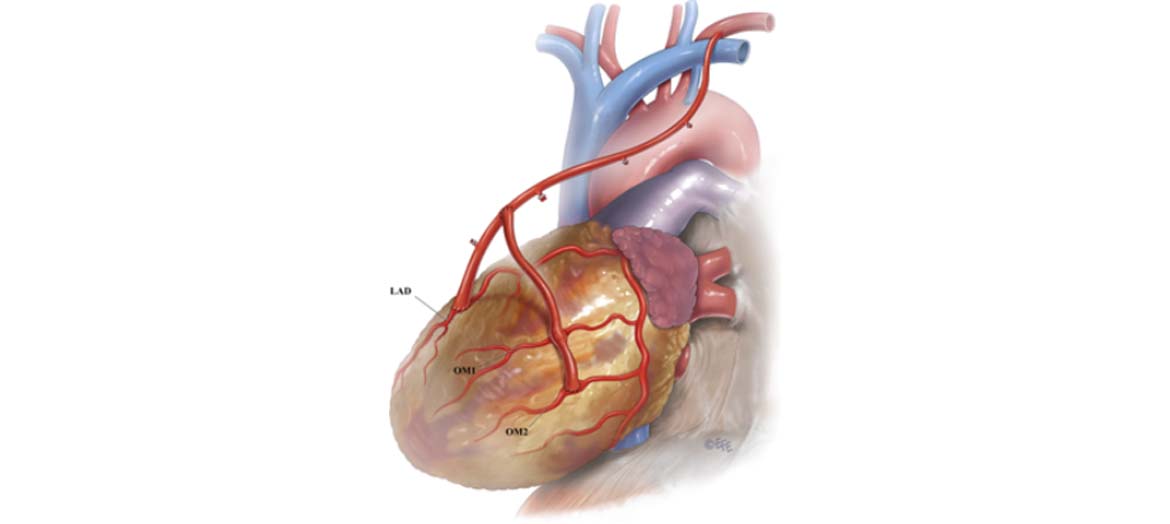1 . What is CABG surgery on a beating heart?
CABG OFF PUMP
What is off-pump CABG?
Coronary artery bypass surgery, commonly known as CABG, is a type of heart surgery. Surgeons perform this type of surgery to bypass blockages in the coronary arteries. An “off-pump CABG” is a CABG performed without the use of a heart-lung machine (cardiopulmonary bypass). This means the heart continues to provide blood to the rest of the body during the surgery. It is sometimes referred to as “beating heart surgery.” In another method used during surgery, a machine takes over the functions of the heart and the lungs and the heart is still.
The coronary arteries deliver nutrients and oxygenated blood to the heart. Atherosclerosis is a disease that can cause hardened plaque to build up in the coronary arteries. This plaque narrows the arteries over time. This can limit the flow of blood to the heart and cause chest pain (angina). The plaque can also make blood clots more likely to form. These clots may completely block the blood flow through one of the arteries and cause a heart attack. CABG is the procedure used to restore normal blood flow to the heart.
CABG surgery offered by our team is OFF PUMP (beating heart) and TOTAL ARTERIAL, wherein we use arteries from either side of the sternum (breastbone) in your chest wall and an artery in the forearm. We use these arteries to create grafts, or bypasses, around the blocked arteries in the heart.
Here is a breakdown of the key features of the surgery:
“Anaortic” means the procedure is performed without manipulating or clamping the aorta. The aorta is the major blood vessel that carries blood from your heart to other parts of your body. Not clamping the aorta helps prevent complications, such as strokes caused by material from within the aorta being dislodged and going to the brain.
“Coronary artery bypass graft” refers to using grafts to detour around clogged areas in the coronary arteries.
“Total arterial” refers to the types of grafts used. The two internal mammary arteries in the chest and a radial artery in each forearm are preferred. They are the most durable and long-lasting blood vessels to use as bypasses around the blocked portion of the coronary artery.
“Off-pump” indicates that your heart beats normally throughout the procedure, without help from a heart-lung machine. The heart-lung machine is used in many traditional CABG surgeries to do the work of the heart and lungs during open-heart surgery.
Benefits of an OPCABG Surgery
An OPCABG procedure has some important benefits over traditional CABG surgery. Many are due to not touching the aorta during the surgery. With traditional CABG, the aorta is manipulated or clamped. This can cause a small blood clot to form in the aorta after surgery. By not touching the aorta, the an OPCABG approach helps prevent strokes and other organ damage due to dangerous clots circulating in the body.
It’s a safer option for people who are elderly or have other health conditions that would make it difficult to recover from complications of surgery.
Benefits of an OPCABG include:
- Fewer complications, including greatly reduced numbers of stroke, renal (kidney) failure, bleeding complications and atrial fibrillation (irregular heart beat) in the months following surgery
- Reduction in operative mortality (death following surgery)
- A shorter stay in the intensive care unit following surgery
- Reduced plaque buildup and greater durability of arterial grafts as compared to veins used as bypass grafts with traditional CABG
- Greater long-term survival with total-arterial grafting as opposed to the use of vein grafts — grafts created from arteries have proven to be the most durable and long-lasting blood vessels to use as bypasses
It may be a better option for people with:
- Atherosclerosis of the aorta.
- Cerebrovascular disease.
- Chronic lung disease.
- Cirrhosis of the liver.
- Kidney disease
- Previous bypass surgery.

